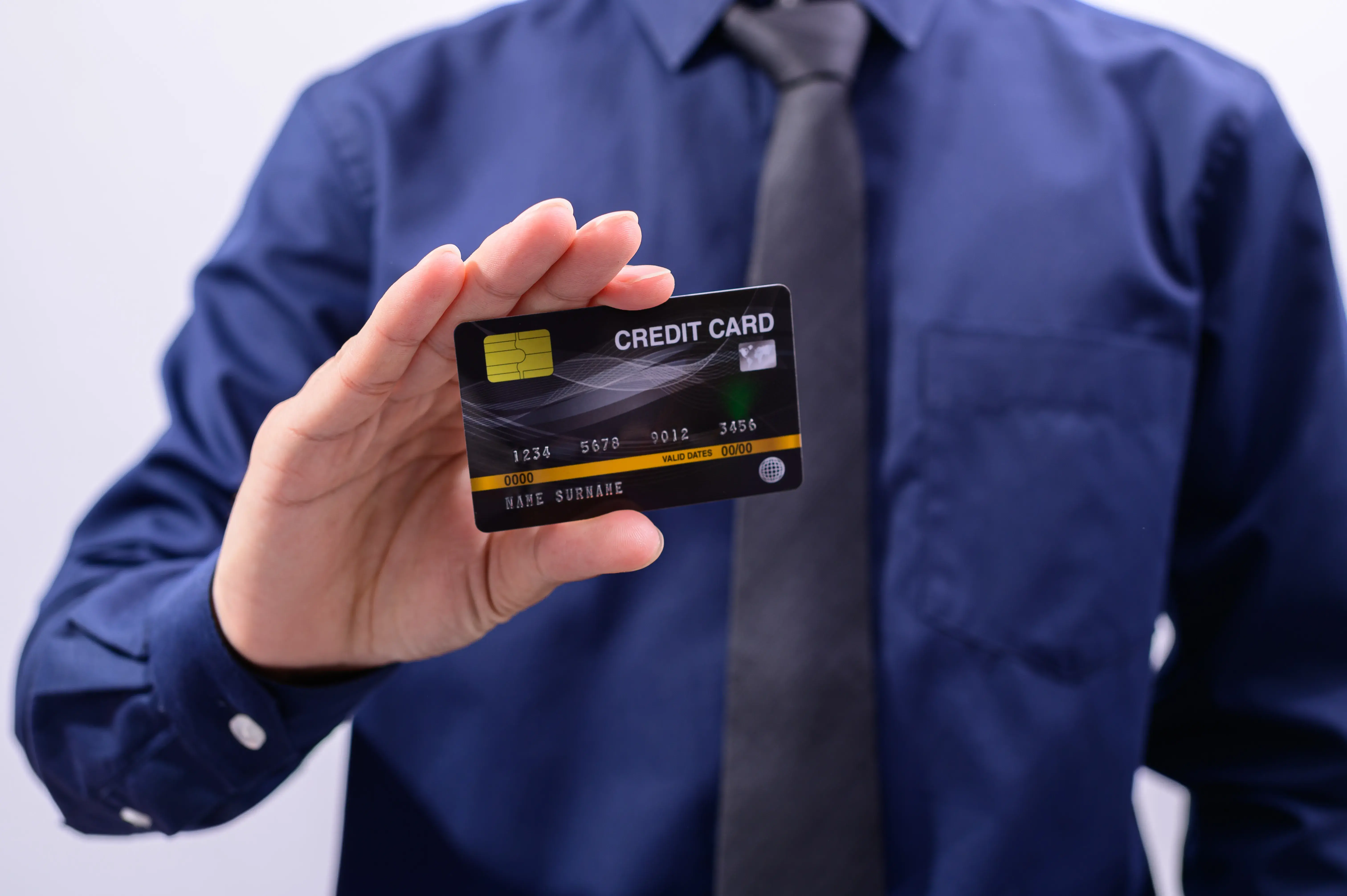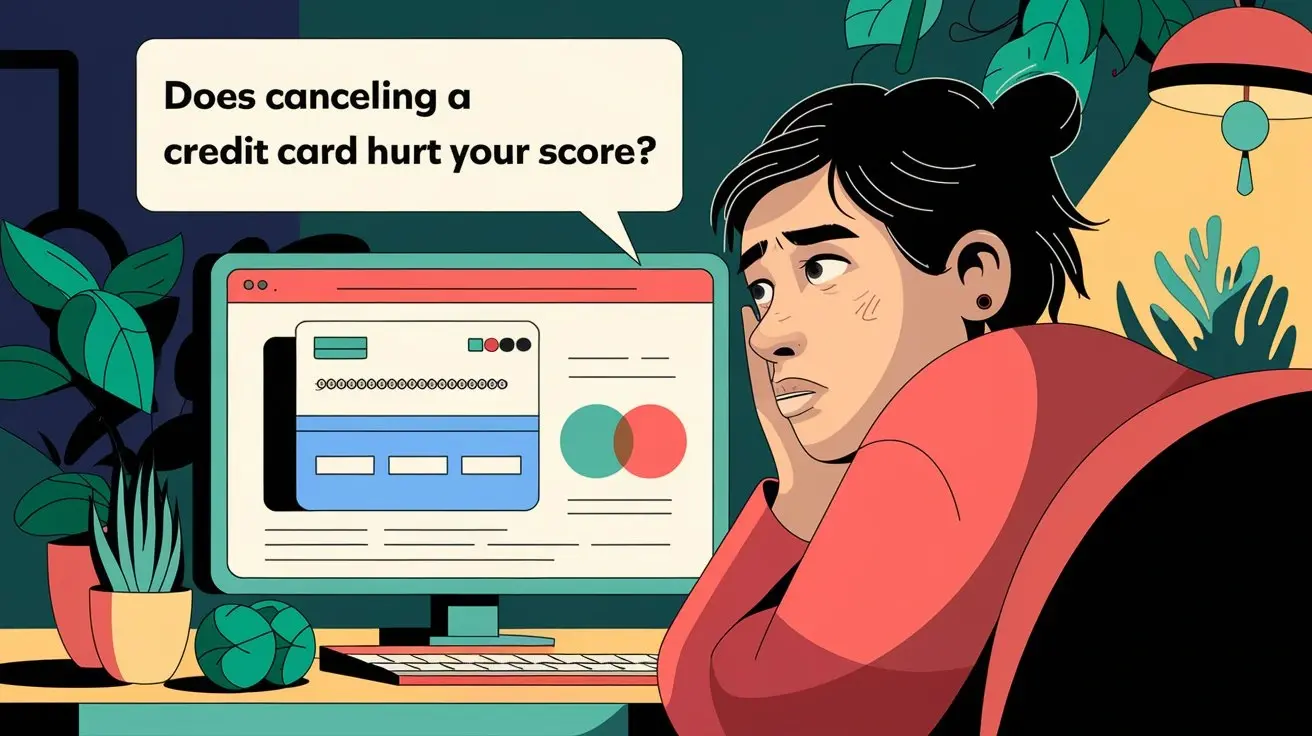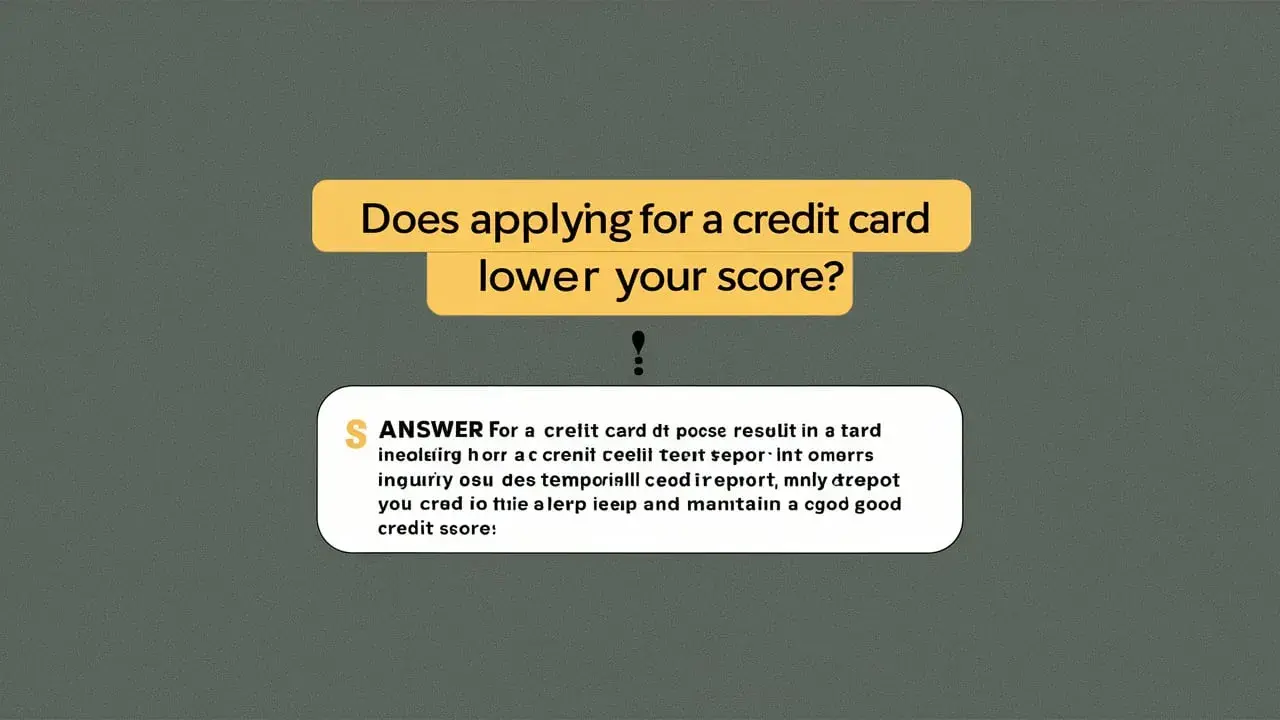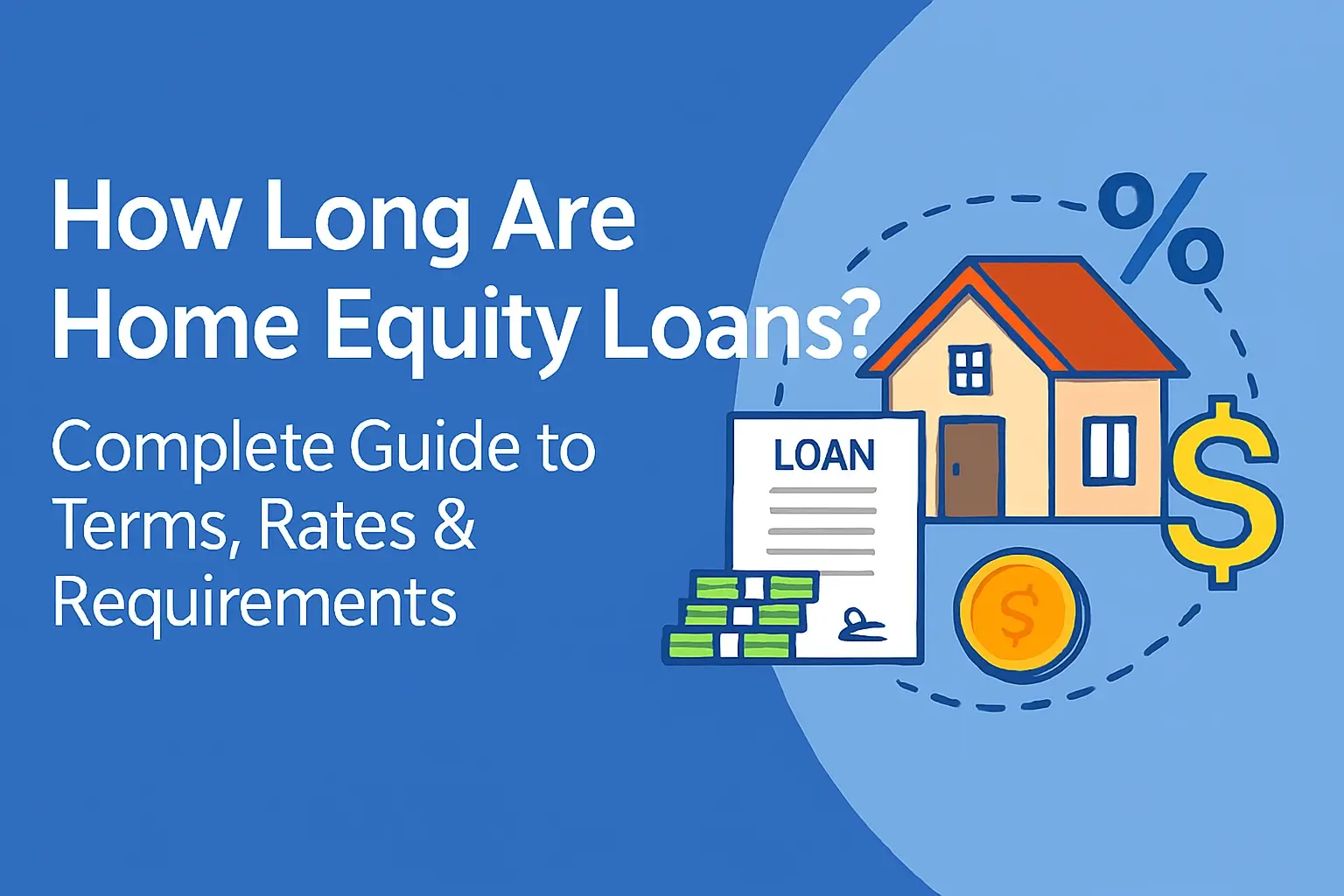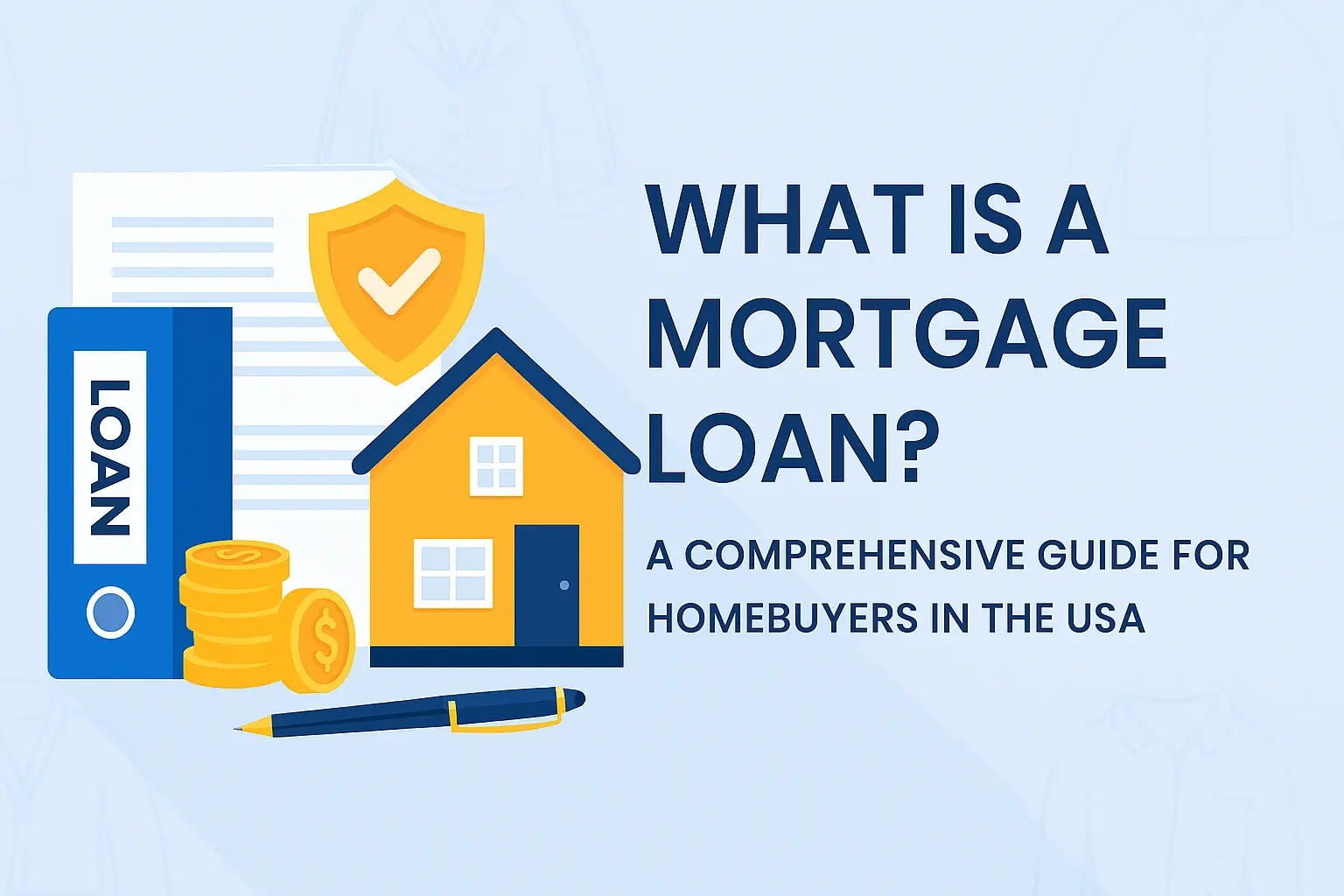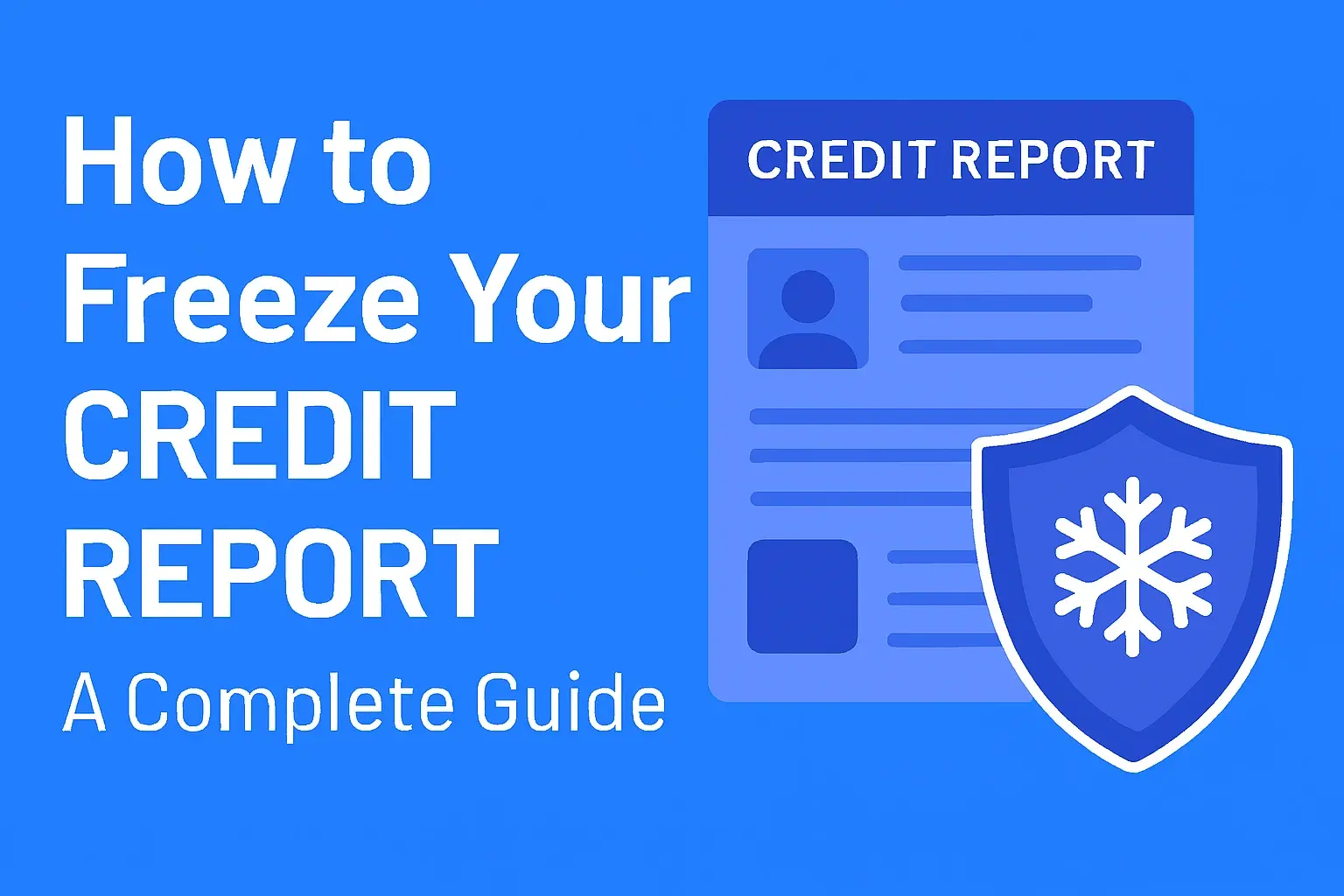-
Posted on: 24 Dec 2022
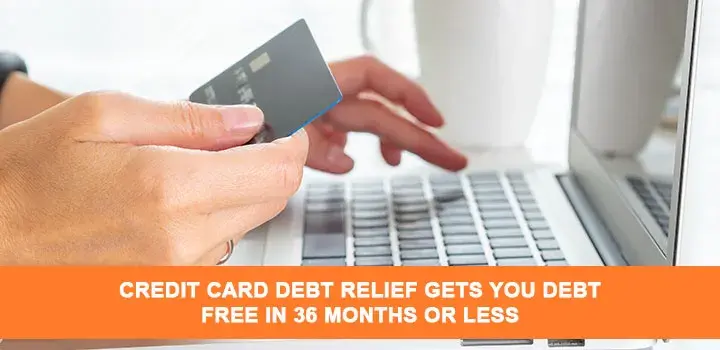
-
Are you drowning in credit card debt? Imagine a life free from high interest payments and constant financial stress. This guide reveals how credit card debt relief can help you achieve a debt-free status in 36 months or less, transforming your financial future.
Understanding Credit Card Debt Relief
Credit card debt relief encompasses a range of strategies and services designed to help individuals manage and reduce their outstanding credit card balances. The primary goal is to alleviate the burden of high interest rates, late fees, and the overwhelming feeling of being trapped by debt. In 2025, the landscape of personal finance is more dynamic than ever, with innovative solutions emerging to tackle the persistent issue of consumer debt. When we talk about "Credit Card Debt Relief Gets You Debt Free in 36 Months or Less," we're not just offering a slogan; we're outlining a tangible and achievable financial objective for many individuals struggling with their credit card obligations.
The core principle behind effective debt relief is to reduce the total amount owed, lower the interest paid, or establish a manageable payment plan that accelerates payoff. This often involves working with creditors directly or through a third-party agency. The effectiveness of any debt relief strategy hinges on a clear understanding of your financial situation, a commitment to the chosen plan, and realistic expectations. The 36-month timeframe is ambitious but achievable when the right approach is taken, focusing on aggressive repayment and minimizing new debt accumulation.
Many people believe that credit card debt is a permanent fixture, a financial albatross that will follow them for years, if not decades. However, with the right tools and a disciplined approach, this perception can be challenged. Debt relief services aim to provide a structured pathway out of this cycle, offering hope and a clear roadmap to financial recovery. The key is to identify the most suitable method that aligns with your income, expenses, and the total amount of debt you carry.
The Power of the 36-Month Goal
Setting a target of becoming debt-free in 36 months or less is a powerful motivator. It transforms a seemingly insurmountable problem into a manageable project with a defined endpoint. This timeframe is often cited because it represents a significant but achievable period for focused financial effort. It's long enough to allow for substantial progress without being so distant that it fosters procrastination.
Why is 36 months a sweet spot? Consider the psychological impact. Completing a debt payoff in three years means you're not just chipping away at debt indefinitely. You're looking at a future where you can save, invest, and enjoy financial freedom relatively soon. This can significantly boost morale and adherence to a debt reduction plan. Furthermore, many debt relief programs are structured to achieve this goal, especially when combined with a disciplined approach to spending and income generation.
From a financial perspective, a shorter payoff period means significantly less interest paid over time. High-interest credit card debt can accrue substantial interest charges, often making it feel like you're treading water. By aggressively tackling the principal balance within 36 months, you drastically cut down on the total cost of your debt. For instance, paying off $20,000 in credit card debt at 20% APR over 36 months versus 60 months can save you thousands of dollars in interest alone.
In 2025, with rising interest rates and economic uncertainties, the urgency to become debt-free quickly is more pronounced than ever. A 36-month goal provides a clear target that can help individuals navigate these challenges. It encourages a proactive stance rather than a reactive one, fostering habits that lead to long-term financial health. This focused approach can also open doors to better financial opportunities, such as qualifying for mortgages or loans with more favorable terms, once your credit profile improves.
Exploring Your Credit Card Debt Relief Options
Navigating the world of credit card debt relief can be complex, with various options available, each with its own set of pros and cons. Understanding these differences is crucial to selecting the strategy that best aligns with your financial situation and goals. The "Credit Card Debt Relief Gets You Debt Free in 36 Months or Less" promise is often achievable through one or a combination of these methods. Let's break down the most common and effective avenues.
Debt Management Plans (DMPs)
A Debt Management Plan (DMP) is a structured program offered by non-profit credit counseling agencies. In a DMP, you make a single monthly payment to the agency, which then distributes the funds to your creditors. These agencies often negotiate with creditors on your behalf to secure lower interest rates, waive late fees, and sometimes reduce the principal balance.
How it works:
- You work with a certified credit counselor to assess your financial situation and determine if a DMP is suitable.
- If approved, you'll make one consolidated monthly payment to the credit counseling agency.
- The agency then pays your creditors according to the negotiated terms.
- Typically, creditors agree to lower interest rates, sometimes as low as 0% for the duration of the plan, and may waive fees.
Pros:
- Consolidated payment simplifies budgeting.
- Reduced interest rates can significantly speed up payoff.
- Often leads to debt freedom within 3-5 years (making the 36-month goal very attainable for many).
- Non-profit agencies prioritize your financial well-being.
Cons:
- May require closing credit card accounts.
- Can impact your credit score temporarily, though often less than missing payments.
- Not all creditors may agree to participate.
- There might be a small monthly fee for the service.
2025 Outlook: DMPs remain a highly recommended option for individuals with good credit but overwhelming debt. The ability to negotiate lower interest rates is particularly valuable in the current economic climate. Many individuals successfully achieve debt freedom within 36 months using a DMP, especially if they commit to avoiding new debt.
Debt Consolidation: Loans and Balance Transfers
Debt consolidation involves combining multiple debts into a single, new loan or balance. The goal is to simplify payments and potentially secure a lower interest rate.
Debt Consolidation Loans
A debt consolidation loan is a personal loan taken out to pay off various debts, such as credit cards. You then make one monthly payment on the new loan.
Pros:
- Simplifies payments into one.
- Can offer a lower interest rate than credit cards, especially if you have good credit.
- Fixed repayment term can provide a clear payoff timeline.
Cons:
- Requires good credit to qualify for favorable rates.
- If the interest rate isn't significantly lower, you might not save much.
- Doesn't address the underlying spending habits that led to the debt.
- If you don't pay off the loan aggressively, it could extend your debt period.
Balance Transfer Credit Cards
This involves transferring balances from high-interest credit cards to a new card with a 0% introductory APR offer.
Pros:
- Allows you to pay down principal without accruing interest for a limited time (typically 12-21 months).
- Can be a fast way to eliminate interest charges if paid off within the promotional period.
Cons:
- Requires good to excellent credit to qualify.
- Balance transfer fees (usually 3-5% of the transferred amount) can add up.
- The regular APR after the introductory period can be very high.
- You must have a plan to pay off the balance before the intro period ends.
- Not ideal for very large debt amounts that can't be paid off within the intro period.
2025 Outlook: Debt consolidation loans are a viable option for those with solid credit who can secure a loan with a significantly lower APR. Balance transfers remain popular, but consumers must be diligent about the promotional period's end date and associated fees. For the 36-month goal, these methods are best used in conjunction with strict budgeting and aggressive repayment.
Debt Settlement Programs
Debt settlement programs involve negotiating with creditors to pay a reduced amount of the debt owed. A debt settlement company negotiates on your behalf, and you typically deposit funds into a dedicated savings account until a lump sum is available to offer creditors.
How it works:
- You stop making payments to your creditors and start making payments to the settlement company's escrow account.
- The settlement company negotiates with creditors to accept a lump sum payment that is less than the full amount owed.
- Once a settlement is reached, the company uses the funds from your escrow account to pay the creditor.
Pros:
- Can significantly reduce the total amount of debt you owe.
- May resolve debt faster than traditional repayment if successful.
Cons:
- Significant Negative Impact on Credit Score: This is a major drawback, as settling debt is often reported as "settled for less than full amount" or similar, which is very damaging.
- Fees: Settlement companies charge substantial fees, often a percentage of the amount you save.
- Creditor Lawsuits: While you're saving money, creditors may sue you for the outstanding debt.
- No Guarantees: There's no guarantee creditors will agree to settle.
- Potential Tax Implications: Forgiven debt may be considered taxable income.
- Not Suitable for the 36-Month Goal if Not Done Carefully: The process can be lengthy and unpredictable, and the credit damage might hinder future financial goals.
2025 Outlook: Debt settlement is generally considered a last resort before bankruptcy due to its severe credit impact and potential legal ramifications. While it can reduce the total amount owed, the damage to your credit score can make achieving financial goals, including securing loans for future needs, much harder and more expensive for years. It's crucial to understand that "Credit Card Debt Relief Gets You Debt Free in 36 Months or Less" through settlement often comes with significant trade-offs.
Bankruptcy: A Last Resort
Bankruptcy is a legal process that can discharge or reorganize your debts. It is typically considered when debts are overwhelming and other relief options are not feasible.
Types:
- Chapter 7: Liquidation of non-exempt assets to pay creditors. Most unsecured debts, like credit cards, are discharged.
- Chapter 13: A repayment plan where you pay creditors over 3-5 years. Some debts may be discharged.
Pros:
- Can provide a fresh start by discharging significant debt.
- Automatic stay halts collection efforts and lawsuits.
Cons:
- Severe Credit Damage: A bankruptcy filing remains on your credit report for 7-10 years, significantly impacting your ability to get credit, rent an apartment, or even get certain jobs.
- Loss of Assets: In Chapter 7, you may lose non-exempt property.
- Costly: Legal fees and court costs can be substantial.
- Not Always a Full Discharge: Certain debts (like student loans, recent taxes, and child support) are generally not dischargeable.
2025 Outlook: Bankruptcy remains a legal tool for extreme financial distress. While it can offer a way out of overwhelming debt, the long-term consequences on creditworthiness are severe. It is not typically the path to achieving debt freedom within 36 months in a way that rebuilds financial health; rather, it's a reset button with significant recovery time.
Choosing the Right Path to Debt Freedom
Selecting the most effective debt relief strategy requires a thorough self-assessment and an understanding of your financial circumstances. The promise of "Credit Card Debt Relief Gets You Debt Free in 36 Months or Less" is only as good as the plan you choose and your commitment to it.
Consider these factors when making your decision:
- Total Debt Amount: For smaller amounts, aggressive budgeting and balance transfers might suffice. For larger amounts, a DMP or consolidation loan may be more appropriate.
- Credit Score: A good credit score opens doors to favorable consolidation loans and balance transfers. If your credit is poor, DMPs or settlement might be considered, though with significant caveats.
- Income Stability: A stable income is crucial for any repayment plan, especially DMPs and consolidation loans.
- Willingness to Change Spending Habits: No debt relief strategy will work long-term if the underlying causes of debt are not addressed.
- Risk Tolerance: Debt settlement and bankruptcy carry higher risks (credit damage, legal issues) than DMPs or consolidation.
Comparison Table: Debt Relief Options
Feature Debt Management Plan (DMP) Debt Consolidation Loan Balance Transfer Debt Settlement Bankruptcy Primary Goal Lower interest, single payment Consolidate debt, potentially lower rate 0% interest for a period Reduce total debt owed Discharge debt legally Credit Score Impact Minor temporary dip, then improvement Initial dip (hard inquiry), then improvement Initial dip (hard inquiry), then improvement Significant negative impact Severe, long-term negative impact Typical Payoff Time 3-5 years Varies by loan term Promotional period (12-21 months) + repayment Variable, can be lengthy 3-5 years (Chapter 13) or immediate discharge (Chapter 7) Fees Small monthly fee Loan origination fees (sometimes) Balance transfer fee (3-5%) Percentage of settled debt (significant) Legal and court fees Best For Overwhelmed but responsible borrowers Good credit, stable income Ability to pay off within promo period Last resort before bankruptcy, willing to accept credit damage Extreme financial distress Your Actionable Steps to Debt-Free Living
Achieving debt freedom within 36 months is an ambitious but achievable goal. It requires a strategic, disciplined, and proactive approach. Here’s a step-by-step guide to help you on your journey.
-
Assess Your Current Financial Situation:
Before you can tackle your debt, you need a clear picture of where you stand.
- List all your debts: Include credit card balances, interest rates (APRs), minimum payments, and due dates.
- Calculate your total debt: Understand the magnitude of the challenge.
- Track your income and expenses: Create a detailed budget to see where your money is going. Identify areas where you can cut back.
-
Set Realistic Goals and a Timeline:
The target is debt-free in 36 months or less. Break this down into smaller, manageable monthly or quarterly goals. For example, if you have $20,000 in debt, you'll need to pay an average of $556 per month (plus interest) to be debt-free in 36 months.
-
Choose Your Debt Relief Strategy:
Based on your assessment, select the most suitable option from the ones discussed: DMP, consolidation loan, balance transfer, or, as a last resort, settlement or bankruptcy. Research reputable providers for any chosen service. For instance, if opting for a DMP, look for accredited non-profit credit counseling agencies.
-
Create and Stick to a Strict Budget:
This is non-negotiable. Your budget must prioritize debt repayment.
- Cut non-essential spending: Dining out, entertainment, subscriptions, impulse purchases.
- Reduce essential spending: Look for cheaper alternatives for groceries, utilities, and transportation.
- Allocate extra funds to debt: Every extra dollar should go towards paying down your principal balance.
-
Increase Your Income (If Possible):
Consider ways to boost your income to accelerate debt payoff.
- Side hustle: Freelancing, gig work, selling unused items.
- Ask for a raise: If you're due for one at your current job.
- Part-time job: Even a few extra hours a week can make a significant difference.
-
Implement a Debt Payoff Strategy:
There are two popular methods:
- Debt Snowball: Pay minimums on all debts except the smallest, on which you pay as much as possible. Once paid off, roll that payment into the next smallest debt. This provides psychological wins.
- Debt Avalanche: Pay minimums on all debts except the one with the highest interest rate, on which you pay as much as possible. This saves the most money on interest over time.
-
Avoid Accumulating New Debt:
This is critical. During your debt relief journey, resist the temptation to take on new credit card debt or loans. If your chosen method involves closing accounts, do so strategically.
-
Monitor Your Progress and Adjust:
Regularly review your budget, debt balances, and progress towards your goals. Be prepared to adjust your plan if your income or expenses change. Celebrate milestones to stay motivated.
-
Educate Yourself on Financial Management:
Use this period to learn about responsible credit use, budgeting, and investing. This will help you maintain your debt-free status long-term. Explore resources on building a strong credit score after debt payoff.
Real-Life Success Stories: Achieving Debt Freedom
The concept of "Credit Card Debt Relief Gets You Debt Free in 36 Months or Less" isn't just theoretical; it's a reality for countless individuals. Hearing from people who have successfully navigated their debt can provide inspiration and practical insights.
Example 1: The Millennial Couple with $30,000 in Debt
Sarah and Mark, both in their late 20s, found themselves burdened by over $30,000 in credit card debt from a combination of lifestyle inflation, unexpected medical bills, and a few impulsive purchases. They felt overwhelmed and unsure where to start. After researching their options, they opted for a Debt Management Plan through a reputable non-profit credit counseling agency.
Their Strategy:
- They enrolled in a DMP, which lowered their average interest rate from 22% to 10%.
- They committed to paying $750 per month, significantly more than their combined minimum payments.
- They cut back drastically on dining out and entertainment, cooking at home and enjoying free activities.
- Mark took on a weekend delivery job to supplement their income.
Outcome: Within 34 months, they successfully paid off all $30,000 of their credit card debt, saving thousands in interest. They felt immense relief and pride in their accomplishment.
Example 2: The Single Parent with $15,000 in Debt
Maria, a single mother, struggled with $15,000 in credit card debt after a period of unemployment. She was worried about her credit score and the impact on her family's future. She chose to pursue a debt consolidation loan after improving her credit slightly by making on-time payments on a secured card.
Her Strategy:
- She secured a personal loan with a 12% APR to pay off her three credit cards, which had APRs ranging from 18% to 25%.
- She committed to paying $500 per month on the consolidation loan, aiming for a payoff within 30 months.
- She implemented a strict budget, focusing on essential needs and finding affordable childcare solutions.
- She avoided using credit cards for any new purchases.
Outcome: Maria successfully paid off her $15,000 debt in 29 months. The lower interest rate on the consolidation loan saved her over $2,000 in interest compared to her original credit cards. Her credit score also saw a significant improvement.
These stories highlight that with the right strategy, commitment, and often a bit of extra effort, achieving debt freedom within 36 months is entirely possible.
Avoiding Common Debt Relief Pitfalls
While the goal of "Credit Card Debt Relief Gets You Debt Free in 36 Months or Less" is attainable, the path can be fraught with potential pitfalls. Being aware of these common mistakes can help you steer clear of them and stay on track.
1. Falling for "Too Good to Be True" Offers:
Be wary of companies promising instant debt elimination or unrealistically low settlement amounts. Legitimate debt relief takes time and effort. If an offer sounds too good to be true, it often is. Always research the reputation and accreditation of any debt relief company.
2. Accumulating New Debt:
This is the most common reason people fail to achieve debt freedom. If you're using debt relief to manage existing debt but continue to rack up new balances, you'll never get ahead. It's crucial to break the cycle of overspending.
3. Ignoring Your Credit Score:
Some debt relief methods, particularly debt settlement and bankruptcy, can severely damage your credit score. While necessary for some, it's important to understand the long-term consequences and have a plan to rebuild your credit afterward. Even with a DMP, closing accounts prematurely can sometimes impact your score negatively.
4. Not Addressing the Root Cause:
Debt is often a symptom of underlying issues like poor budgeting, emotional spending, or lack of financial education. If you don't address these root causes, you're likely to fall back into debt even after a successful relief program.
5. Paying High, Hidden Fees:
Some debt relief companies charge exorbitant fees that eat into the money you're trying to save or pay off. Always get a clear, written breakdown of all fees before agreeing to any service. Non-profit credit counseling agencies generally have lower and more transparent fees.
6. Believing Debt Settlement is Always the Best Option:
While debt settlement can reduce the amount owed, the severe credit damage, potential legal issues, and high fees often outweigh the benefits. For many, a DMP or consolidation loan offers a less damaging path to debt freedom.
7. Giving Up Too Soon:
Debt relief is a marathon, not a sprint. There will be challenging months. Don't get discouraged by setbacks. Stay committed to your plan, seek support when needed, and remember your ultimate goal.
Building a Financially Secure Future
Achieving debt freedom is not just about eliminating a burden; it's about building a foundation for a more secure and prosperous future. Once you've paid off your credit card debt, the opportunities for financial growth are immense.
1. Establish an Emergency Fund:
Before you focus on aggressive saving or investing, build an emergency fund. Aim to save 3-6 months of living expenses. This fund will prevent you from relying on credit cards the next time an unexpected expense arises.
2. Rebuild and Improve Your Credit:
If your debt relief method negatively impacted your credit score, focus on rebuilding it. This involves continuing to make on-time payments, keeping credit utilization low, and monitoring your credit reports for errors. A good credit score is essential for obtaining favorable rates on future loans, mortgages, and even for renting an apartment or securing certain jobs. Consider using tools for credit monitoring and repair.
3. Start Saving and Investing:
With no debt payments, you can now allocate funds towards your long-term financial goals.
- Retirement: Contribute to employer-sponsored retirement plans (like 401(k)s) and individual retirement accounts (IRAs).
- Other Goals: Save for a down payment on a home, your children's education, or other significant purchases.
- Invest: Explore investment options to grow your wealth over time.
4. Continue Prudent Financial Habits:
The discipline you developed during your debt payoff journey should become a permanent part of your financial life. Continue budgeting, tracking expenses, and making conscious spending decisions. Avoid lifestyle inflation, where your spending increases proportionally with your income.
5. Consider Financial Planning:
As your financial situation improves, consider working with a qualified financial advisor to create a comprehensive financial plan that aligns with your goals.
The journey to debt freedom is a significant accomplishment. By continuing to make smart financial choices, you can ensure that your future is one of stability, growth, and financial peace.
Your Journey to a Debt-Free Life Starts Now
The promise of "Credit Card Debt Relief Gets You Debt Free in 36 Months or Less" is more than just a catchy phrase; it's a realistic and empowering objective. By understanding the various debt relief options available—from Debt Management Plans and consolidation to settlement and bankruptcy—you can choose the path best suited to your unique financial circumstances. The key to achieving this ambitious goal lies in diligent assessment, strategic planning, unwavering commitment, and a willingness to adjust spending habits.
Remember that success hinges on more than just a program; it requires your active participation. Implementing a strict budget, exploring avenues to increase income, and employing effective debt payoff strategies like the debt avalanche or snowball method are crucial. Equally important is avoiding the common pitfalls that derail many—falling for deceptive offers, accumulating new debt, or neglecting the root causes of financial struggles.
Taking the first step can feel daunting, but the rewards of a debt-free life are immeasurable: reduced stress, improved creditworthiness, and the freedom to pursue your financial dreams. Don't let credit card debt dictate your future. Explore the resources available, commit to a plan, and start building a financially secure tomorrow today. Your journey to lasting financial freedom begins with a single, informed decision.

